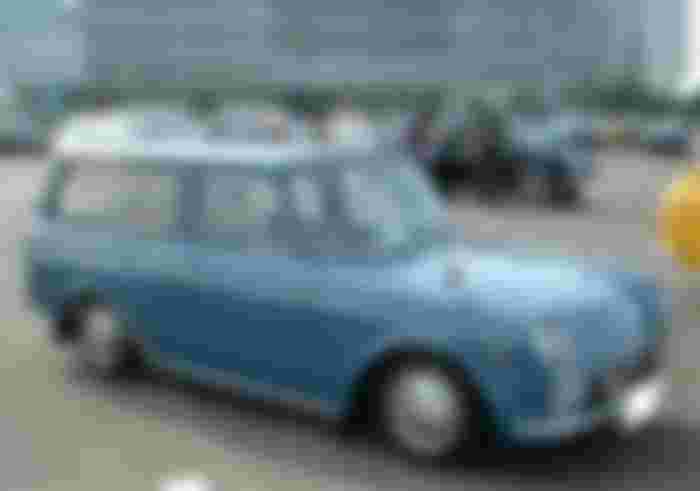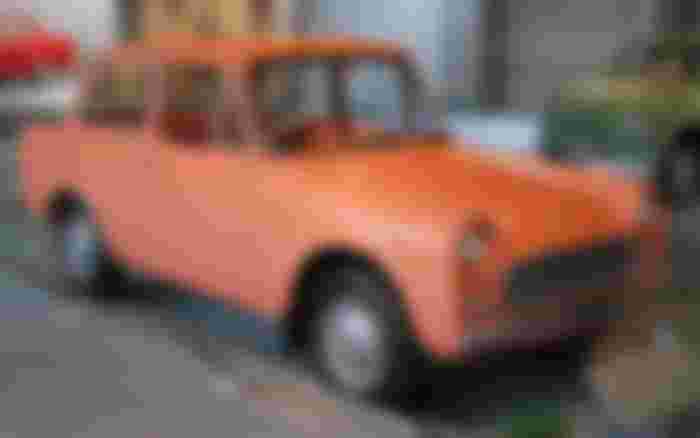David vs Goliath - Toyota Sports 800 (1965-1969)
The Land of the Rising Sun is home to many great things. However in a car enthusiast's mindset, only one of those things matter, and that is the country's contribution to the automotive landscape. The Japanese auto industry has made some of the most respected vehicles in the world, from endlessly reliable and practical economy cars, to tough and rugged off-roaders.
Yet at the core, in its beating heart, are sports cars. Japan has made some of the very best in class, with iconic names such as NSX, Supra, S2000, Lancer, and Impreza, just to name a few. There are simply too many nameplates to put into a single body of text, yet they each hold a special place in our hearts.

Recently, I wrote an article about Japan's very first supercar, the Toyota 2000GT. It was a beautifully crafted automobile with respectable performance, sumptuous luxury, and a rather hefty price tag. While the 2000GT did not sell very well, as Toyota had to book a loss for each one sold, the 2000GT did solidify its place in automotive history.
While the 2000GT deserves that merit, it would not have been conceived, if not for what came before it, Toyota's first production sports car, the Sports 800. Much of what we have seen and adored on the 2000GT, all came from the little 800.
Humble beginnings.

Toyota's Sports 800 was released in 1965, alongside other sports cars from their rivals, such as Honda's S500, Datsun's Fairlady, and Daihatsu's Compagno. Respectively, they had each marked the beginning for Japan's foray onto performance cars.
Yet, despite the importance of its launch, the Sports 800 had modest beginnings, sharing much of the platform and mechanicals from the Publica, a Japanese-market economy car. The Publica series were conceived as small, boxy, and affordable cars for the family, and made with various different body styles including, but not limited to, wagons, vans, pickups, lorries, and so it goes on.

When the Sports 800 was first shown in the 1962 Tokyo Motor Show as a concept car, it was called the Publica Sports. Toyota made no attempts to conceal its origins, and the Publica Sports concept car was shown to the attendees as a space-age automobile, with a sliding canopy roof.
Unlike the later 2000GT, which was sold all over the world as Toyota's halo car, to display the company's engineering capabilities, the Sports 800 was sold only in Japan through the same retail outlets where Toyota sold the Publica. The Sports 800 was affectionately referred to as "Yota-Hachi ", or "Toyota 8 ".

The design of the Sports 800 can be described accurately as cutesy and loveable. It had very small proportions equivalent to a Mini. However, while the Mini was boxy and utilitarian, the Sports 800 had all the charm and attraction of a proper sports car. It was curvy, a word which I've used to describe the 2000GT a lot, but is even more apparent with the smaller 800.
To some eyes, it may look similar to a toy car, with its comical looks, and large bug-eyed headlights. That said, one interesting characteristic about the Sports 800, was its removable roof panel. While the production cars did not get the space-age canopy roof of the concept, each Sports 800 came with an aluminium targa top, and it was one of the first to do so, preceding Porsche's 911 Targa.



Just as with the roof, much of the Sports 800 was made of lightweight aluminium, with steel being used sparingly. This construction method, along with the aerodynamically-curvy bodywork, was made to enhance the balance of the car, as its early designers and engineers used to work on fighter planes in the Second World War. Overall, this resulted in a curb weight of just 580 kg (1,279 lbs).
A Pocket Rocket.
The Sports 800 has a front-engine, rear-wheel drive layout. Under the bonnet, you won't find much, as it shared the same engine with its Publica siblings. Consequently, the Sports 800 was powered by a 790 cc (0.79 L) 2-cylinder, air-cooled boxer engine, with twin-carburettors. All this "grunt " resulted in an engine that made a grand total of 44 hp, and 49.18 lb-ft of torque, which is still significantly more power than the Public Sports concept, which had about 20 hp.

As a result, the Sports 800 will accelerate from 0 to 60 mph eventually, with a top speed of 100 mph, sending the power through a 4-speed non-synchro gearbox, though a synchro first-gear transmission was made in 1967.
One interesting fact, was that Toyota made a gas-turbine hybrid concept shown at the 1979 Tokyo Motor Show, producing 30 hp and mated to a 2-speed transmission powering an electric motor, which would've made it one of the first hybrid cars in history.

Now, going through those numbers probably won't convince you that the Sports 800 was a proper sports car, even compared to its modest peers from the 60s. However, there are two very good reasons to dispel your concerns. Firstly, Japan's economy at the time could not support the large-capacity engines which were present elsewhere in the world. The Sports 800's small engine capacity meant it had a small thirst, as much as 62 mpg, ensuring that the average Japanese could have a fun, yet fuel-conscious car.
Secondly, while the raw numbers may not prove the 800 to be any fast, remember that it was conceived with lightness and aerodynamics first. The Sports 800 had a low centre of gravity, and a short wheelbase with a wide track further enhancing its dynamic abilities. While not fast in the straights, the Sports 800 made mincemeat of its competitors in the corners.


Not only was the Sports 800 great fun to drive on normal roads, it was good on track as well. The Sports 800 would mark the beginning on Toyota's entry onto motorsports, and it had good reliability, fuel efficiency, aerodynamic and lightweight balance along with it. The Gazoo Racing division at Toyota tuned the cutesy 800 to make just over 70 hp, which was still underpowered compared to its rivals, which included recognisable names such as the Skyline GT, Lotus Elan, Datsun Fairlady, and Honda S600.
Yet, the tiny Sports 800 handily won the very first Suzuka 500 km race. Its small engine promised an efficient thirst, and as its competitors had to pit for more fuel, the little 800 kept going with more than 30% left at the end of the race, and its simplicity meant good reliability despite the harshness of the track. In the 1967 Fuji 24-hour race, the Sports 800 came in third place, with a one-two finish going to its larger cousins, the 2000GT, cementing Toyota's prowess in motorsports.

Thus, Toyota had created a small, economical, yet fun and engaging driver's car. That entertainment factor is improved significantly, should one decide to remove the targa top, driving across the swooping roads of Mount Fuji, or through the small roads at Yokohama Harbour. This is the very same principle, which some decades later, spawned Mazda's very own MX-5 Miata, a similar modestly-powered sports car, with a lot of fun and smiles for the driver.
On its final production run, Toyota sold 3,131 Sports 800s, mostly right-hand drive, but with some left-hand drive models for the Okinawa market, which was at the time under U.S. occupation. However, with 1960s rust plaguing almost every car, it's noted that only about 10% of Sports 800s have survived today.



While it may not have gained the remembrance today as its successor, the 2000GT, the little Sports 800 was the first, and had inspired Toyota's commitment to sports cars in the decades to come. As we begin to see more Supras racing about, and Toyota is in the works with a new GT-86, let's all take a moment to remember where it all began, with the cute, fun, and little Sports 800.

Sources: Wikipedia, Toyota Blog 1 2, Toyota, Jalopnik, Petrolicious















